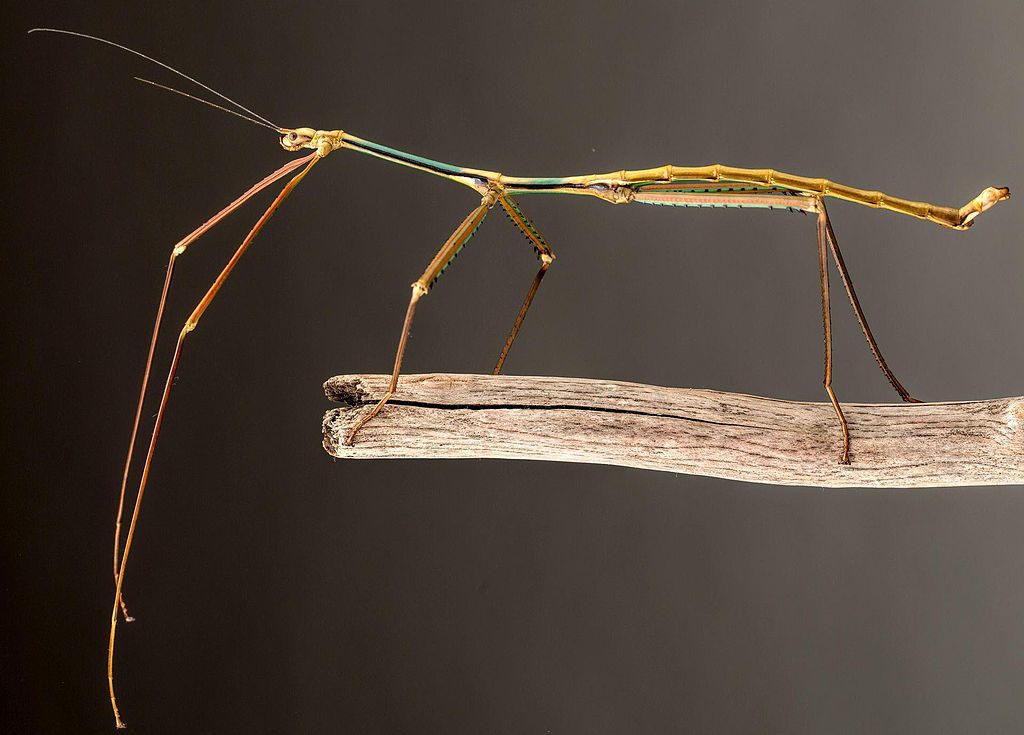Let Us Introduce You to the World’s Largest Insect
Atlas Obscura welcomes our giant stick insect overlords.

Male Phryganistria tamdaoensis from Tam Dao National Park, Vietnam. The newly-discovered world’s largest insect is also a member of Phryganistria. (Photo: Joachim Bresseel and Jérôme Constant/CC-BY-SA 3.0)
Depending on how you feel about insects, an exciting—or deeply upsetting—announcement was made in China this week.
A previously-undiscovered species of stick insect has officially been denoted the longest insect in the world, measuring a whopping 62.4 centimeters (just over two feet) long.
The specimen, located at the Insect Museum of West China, was discovered in late 2014 by researcher Zhao Li. According to China’s Xinhua news agency, Zhao had been on the lookout for a large stick insect in the Guangxi region of China for 16 years, ever since locals shared sightings of a half-meter-long “huge insect.” Finally, on the night of August 16, Zhao spotted his quarry, telling Xinhua, “I was collecting insects on a 1,200-meter-tall mountain in Guangxi’s Liuzhou City on the night of Aug. 16, 2014, when a dark shadow appeared in the distance, which looked like a tree twig.”
World’s longest insect, this species grows to a total length of 624 mm, found in S China’s Guangxi @NHM_London pic.twitter.com/B5rQmRj44S
— China Xinhua News (@XHNews) May 5, 2016
Looking like a tree twig is a stick insect’s primary means of camouflage; typically, stick insects stay motionless during the day to complete the illusion and avoid predators, and will even feign death or shed limbs to stop an attack. But not all stick insects are quite so large—the smallest species is only half an inch long—but any length that falls under the category of “believable stick size” is advantageous for the insects.
In fact, stick insects are generally among the largest insects in the world. The previous record-holder (out of 807,625 named insect species) was also a stick insect. Phobaeticus chani (Chan’s Megastick)—discovered by and named after an amateur naturalist in Borneo in 2008—measured 56 centimeters (about 22 inches), only slightly smaller than the new champion. Currently, there are over 3,000 known species of stick insects, and given the insects’ mastery of disguise, additional undiscovered species are likely.

A female Phobaeticus chani, now the world’s second-largest insect. (Photo: WildManofBorneo/CC-BY-SA 3.0)
Zhao’s find has been named Phryganistria chinensis, and a paper detailing the discovery is forthcoming. It will be up to eagle-eyed entomologists to determine if there are even larger stick insects hiding from us, and based on recent history, they could very well be out there, lurking among the trees. But before you begin entertaining nightmares of giant stick insect invasions, remember: all the stick insects known to us (so far) are herbivores.













Follow us on Twitter to get the latest on the world's hidden wonders.
Like us on Facebook to get the latest on the world's hidden wonders.
Follow us on Twitter Like us on Facebook